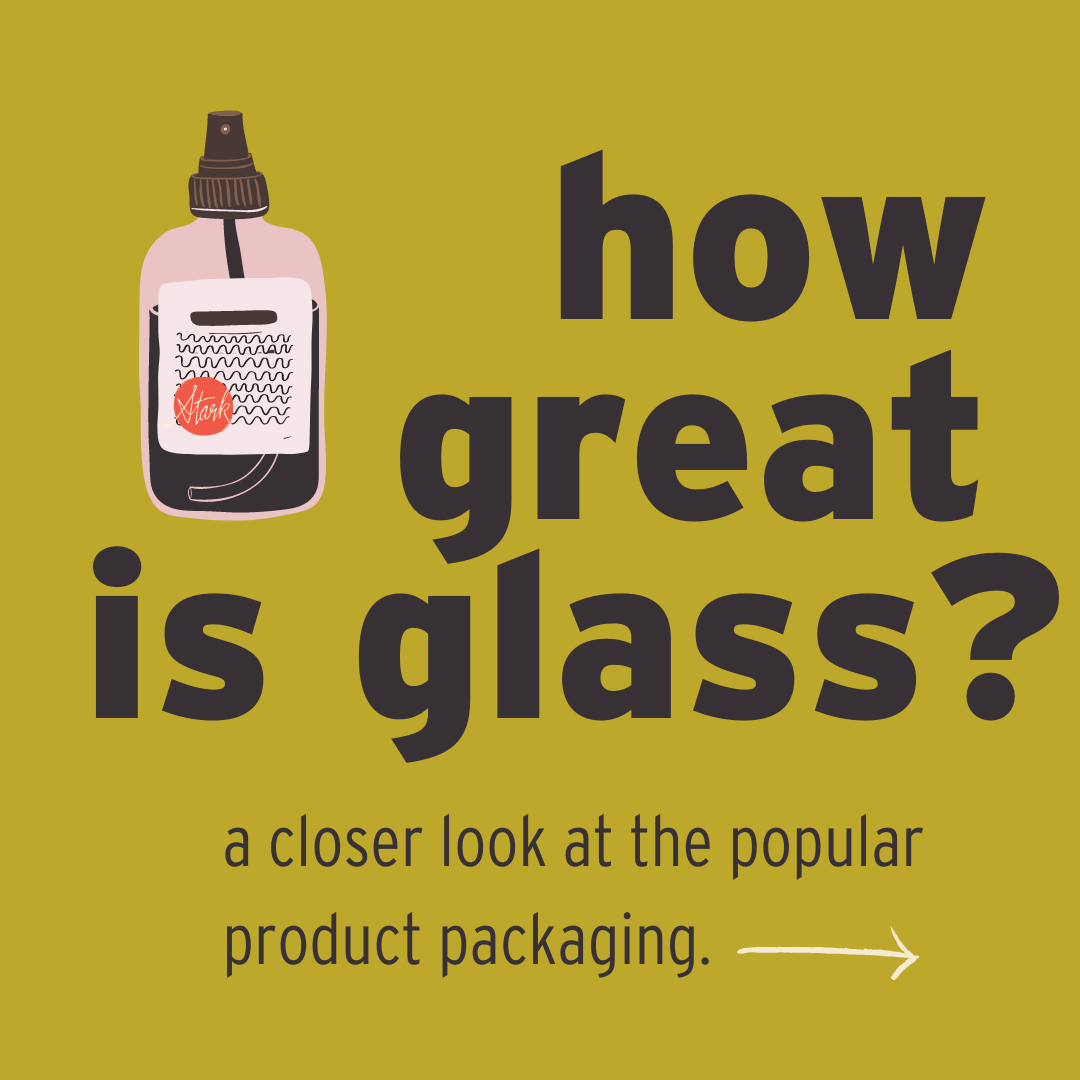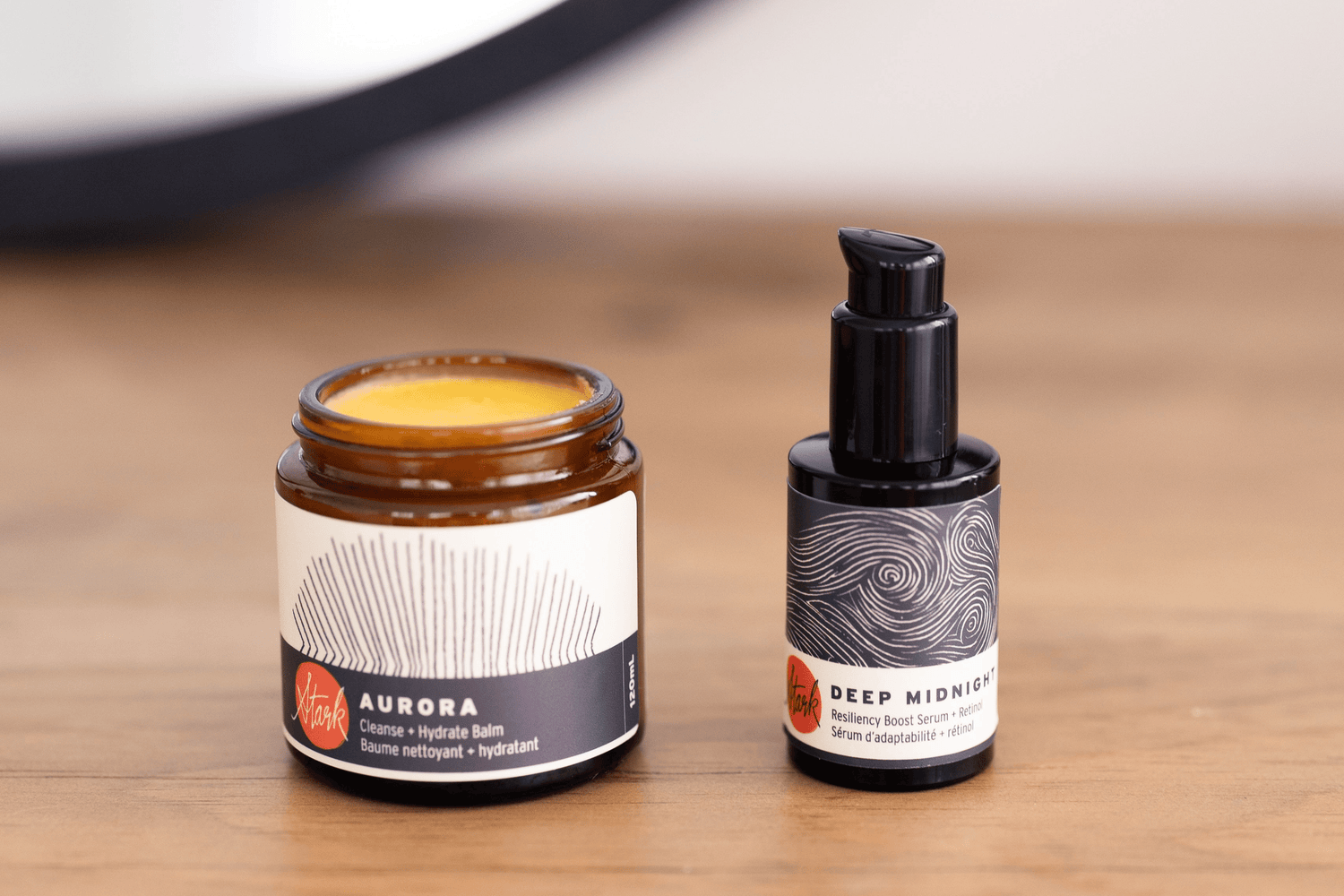
Is glass packaging sustainable?
Share
Glass and beauty products seem to go hand in hand. Glass reads more upscale and "cleaner". But does that make it best?
Packaging in the world of beauty is a complex subject. Ask any brand founder... choice is extremely limited because:
1. What is readily available to us isn't diverse or unproblematic (we don't manufacture our own perfect solution and custom packaging is only available in HUGE quantities) and
2. We use what our customers say ($) they prefer, perhaps simply based on industry standard.
Therefore, glass is most common in green/eco/indie brands… but is it all that?
Manufacturing glass:
Manufacturing virgin glass (from silica sand, soda ash and limestone) is energy intensive and destructive, both in terms of extracting it, and creating the bottles and jars themselves.
Manufacturing with recycled glass is theoretically better, but the process is still energy intensive and new raw material needs to be added in.
In 2007, the North American glass industry had an average of 23% post-consumer recycled content.
The good news, more and more facilities to improve the efficiency of manufacturing of glass are being developed.
Recycling glass:
Most* bottles are not just sorted, sterilized, sold back to bottle companies and reused! Unfortunately, glass is not as easy to recycle as you'd hope. Ie. broken glass isn't recyclable, the overabundance of it means lots ends up in landfills anyhow, contaminated glass isn't accepted, etc.
Also, glass can only be recycled into the same colour as it is; so clear glass becomes clear glass, amber becomes amber, green becomes green. (This is one reason Stark uses common amber bottles!)
Although in most areas you can just toss empty glass products into recycling bins (and hope for the best), how much is actually recycled isn't clear. Also, recycling programs may be common (if problematic) in North America, but many areas of the world still have NO recycling facilities.
Shipping glass is a nightmare:
A huge issue with glass is that it is finicky AF, breaks constantly, hates temperature fluctuations and weighs a lot (compared to plastic). When bottles are sent from a supplier to a brand, it is packed in an absurd amount of material (mostly plastic). Glass is not a local product for 99.9% of companies, and will need to be shipped... and it's heavy. Smashed glass often gets shipped back to supplier. From the brand (or product lab or whoever is making the final product), the glass bottles tend to need elaborate outer packaging and packing material so it doesn't smash on it's way to the retailer or customer.
Think of how much that product has a) travelled and b) been coddled in materials along the way.
Carbon footprint: huge.
Beauty biz-specific issues:
In our not-so-humble, multi-billion dollar industry, we have acquired a taste for very heavy glass, odd colours that other industries don't use (looking at you, black and white), complicated delivery systems like glass and plastic and rubber droppers (a lifecycle nightmare! NO THANKS!), single-use products (glass "ampoules" housed in enough glass for a multi-use product) and problematic consumption rates.
It should be up to the companies to do better with packaging...but as I said, options are limited and imperfect, and business flows where the money goes.
More glassy facts:
- Since 1980 the average weight of a glass container has been reduced by 10%.
- 1 million years is how long glass takes to break down naturally.
- 82% of glass containers consumed in Canada every year are reused or recycled.
- 1 coffee mug in a truckload of glass is enough to contaminate the load and cause it to be rejected from recycling.
- *1 beer bottle is refilled an average of 15 times. (Beauty bottles are not.)
- Reusing as much as you can before recycling glass bottles and jars is best!
- Look for products that use smallest/lightest possibly glass package possible.




